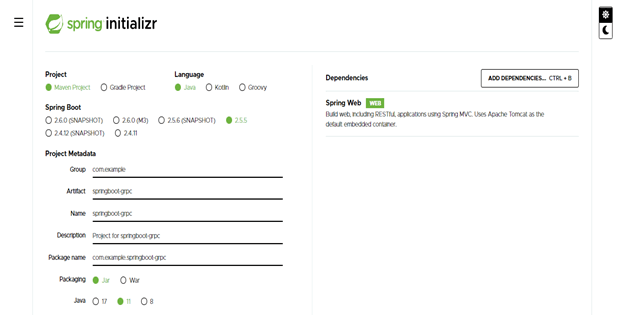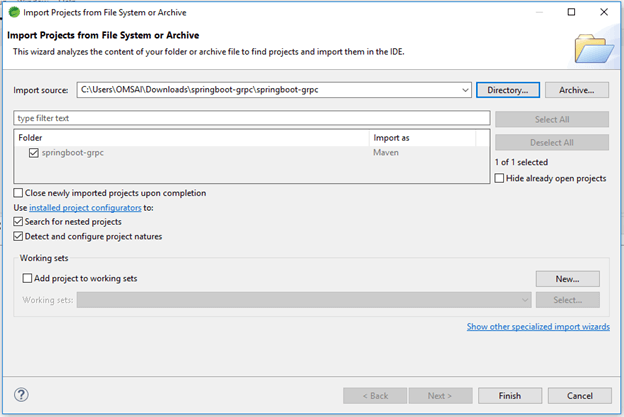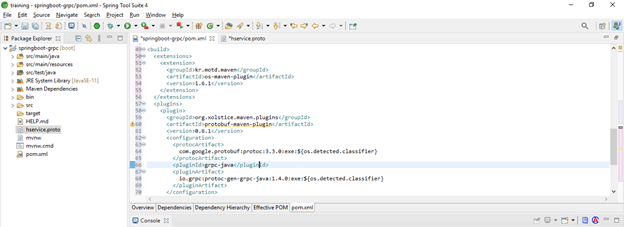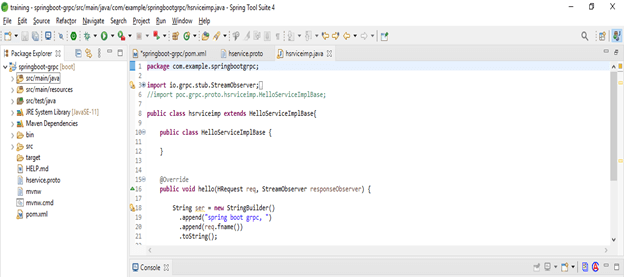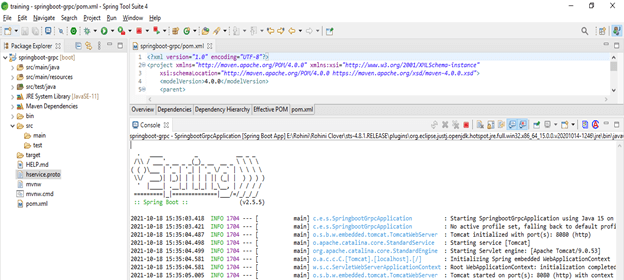Updated April 4, 2023
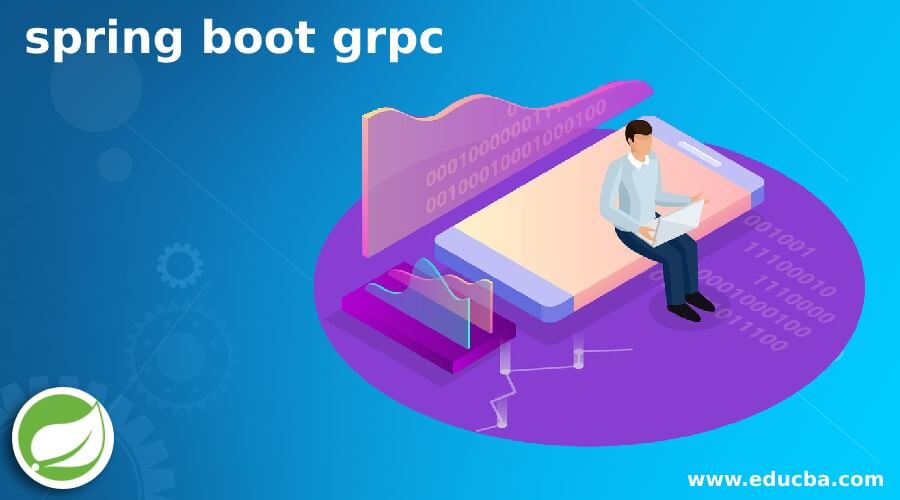
Introduction to Spring Boot gRPC
Spring boot grpc is an open-source and high-performance framework of RPC which Google developed; it will help to eliminate code and help to connect the services across our data centers. Grpc framework is based on the client-server model for the calls of the remote procedure. Client applications in the grpc framework will directly call the method on an application server if it contains the local object. To develop a client-server model using grpc, we need to add the grpc dependency in the pom.xml file.
What is Spring Boot gRPC?
- Remote procedure call in gRPC involves distributed computing stage, referring to the procedure execution of the remote using client.
- Spring boot gRPC framework is run on any environment; it will enable client and server applications to communicate with each other transparently. gRPC is a highly scalable system that was used to communicate client-server applications to each other.
- Spring boot gRPC is basically used to develop a mobile application that was used to communicate with a cloud server.
- Using the gRPC framework, it is possible to develop a new protocol that needs to be accurate and language-independent.
- Spring boot gRPC supports the extension for layered design like logging, load balancing, and monitoring.
- gRPC is used to perform high-speed communication between microservices. Moreover, it allows the developer to integrate their services which were written in different languages.
- Basically, grpc uses the protocol buffers, i.e., protobuf messaging format for structured data, which was serialized.
Getting Started Service
- We have required the following software to develop the gRPC framework application are as follows.
- Spring boot maven project.
- Spring boot version – 2.5.5
- Java 11
- Spring tool suite
- Dependency – gRPC-netty, gRPC protobuf and gRPC-stub
- To develop the application by using gRPC, we need to follow the below steps are as follows.
- Create a project template by using a spring initializer.
- After creating the project template, open the project in the spring tool suite.
- After creating the project, add the gRPC dependency in the pom.xml file.
- After adding the dependency, then define the service of the project.
- After defining the service then we need to define the structure of the message.
- After defining the structure of the message, we need to define the service contract.
- After defining the service contract, the next step is to generate the code using the maven plugin or the compiler of buffer protocol.
- After generating the code next step is to create the server.
- After creating the server next step is to run the gRPC server
- After running gRPC server next step is to create the client.
- gRPC provides the construct channel, which abstracts the details of connection, load balancing, and connection pooling.
- In some scenarios, as compared to spring boot REST API, gRPC API is more useful and efficient.
Spring Boot gRPC code
Below examples shown to create gRPC code are as follows.
- Create a project template using spring initializer and give a name to the project –
In the below step, we have provided the project group name as com.example, artifact name as springboot-gRPC, project name as springboot-gRPC, package as a jar file, and selecting java version as 11.
Group – com.example
Artifact name – springboot-grpc
Name – springboot-grpc
Description – Project for springboot-grpc
Spring boot – 2.5.5
Project – Maven project
Package name – com.example.springboot-grpc
Packaging – Jar
Java – 11
Dependencies – spring web
- After generating project extract files and open this project by using spring tool suite –
- After opening the project using the spring tool suite, check the project and its files –
- Add dependency packages –
Code –
<dependency> -- Start of dependency tag.
<groupId>io.grpc</groupId> -- Start and end of groupId tag.
<artifactId>grpc-netty</artifactId> -- Start and end of artifactId tag.
</dependency> -- End of dependency tag.
<dependency> -- Start of dependency tag.
<groupId>io.grpc</groupId> -- Start and end of groupId tag.
<artifactId>grpc-protobuf</artifactId> -- Start and end of artifactId tag.
</dependency> -- End of dependency tag.
<dependency> -- Start of dependency tag.
<groupId>io.grpc</groupId> -- Start and end of groupId tag.
<artifactId>grpc-stub</artifactId> -- Start and end of artifactId tag.
</dependency> -- End of dependency tag.- Define basic configuration –
Code –
syntax = "proto3"; -- define syntax as proto.
option java_multiple_files = true; -- Define option of java file as true.- Define message structure –
Code –
message HRequest
{
string fName = 1;
}
message HResponse
{
string res = 1;
}- Define service contract –
Code –
service hservice
{
rpc hello(HRequest) returns (HResponse);
}- Generate the grpc code by using the maven plugin –
Code –
<plugin> -- Start of plugin tab.
<groupId>org.xolstice.maven.plugins</groupId> -- Start and end of groupId tag.
<artifactId>protobuf-maven-plugin</artifactId> -- Start and end of artifactid tag.
</plugin> -- End of plugin tab.Creating the Server
- Below code shows to create grpc server are as follows.
Code –
public class hsrviceimp extends HelloServiceImplBase{
public class HelloServiceImplBase {
}
@Override
public void hello(HRequest req, StreamObserver responseObserver) {
String ser = new StringBuilder ()
.append ("spring boot grpc, ")
.append (req.fname ())
.toString ();
HResponse res = ((Object) HResponse.newBuilder ())
.setGreeting (ser)
.build ();
responseObserver.onNext (res);
responseObserver.onCompleted ();
}
}Running gRPC server
- The below code shows to run the gRPC server as follows.
Code –
public class grpcser {
public static void main(String[] args)
{
Server server = ServerBuilder
.forPort (8080)
.addService (new hserviceimp ()).build ();
server.start ();
server.awaitTermination ()
}
}Creating gRPC Server – Client
- The below code shows create a gRPC clients are as follows.
Code –
public class grpcclient {
public static void main(String[] args) {
ManagedChannel ch = ManagedChannelBuilder.forAddress ("localhost", 8080)
.usePlaintext ()
.build ();
HResponse hRes = stub.hello (HRequest.newBuilder ()
.setfname ("ABC")
.build ());
ch.shutdown ();
}
}Conclusion
Spring Boot gRPC is nothing but an open-source framework that was run on any environment. Using gRPC, we can easily connect our services to data centers with load balancing and authentication. gRPC is also applicable in computing devices that were distributed.
Recommended Articles
We hope that this EDUCBA information on “Spring Boot gRPC” was beneficial to you. You can view EDUCBA’s recommended articles for more information.
